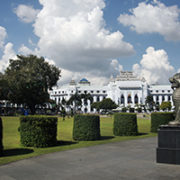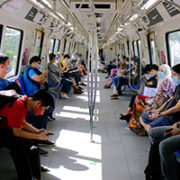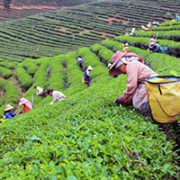Climate change, Energy
 Urban development
Urban development
 Climate change, Economics, Environment, Finance sector development
Climate change, Economics, Environment, Finance sector development
 Health, Water
Health, Water
 Energy, Regional cooperation and integration
Energy, Regional cooperation and integration
 Governance and public sector management
Governance and public sector management
 Finance sector development, Governance and public sector management, Health, Regional cooperation and integration
Finance sector development, Governance and public sector management, Health, Regional cooperation and integration
 Agriculture and natural resources, Health, Social development and protection
Agriculture and natural resources, Health, Social development and protection
 Health, Poverty, Social development and protection
Health, Poverty, Social development and protection
 Gender, Poverty, Social development and protection
Gender, Poverty, Social development and protection

Overcoming the challenge of energy efficiency financing in Asia

Asia needs to rely on energy efficiency improvements to meet its growing energy demand, which has been driven by industrialisation, urbanisation, and rising incomes among the ballooning middle class. Energy efficiency improvements and investments in green technology development and deployment are necessary to mitigate the adverse impacts of climate change. However, the question of how to finance these improvements in energy efficiency and the greater deployment of renewable energy sources is serving to be a significant challenge in this important economic region.
World competition among cities: City trends and the framing of a livable city

Over the next 3 decades, about 70% of the world’s population is expected to be living in urban areas. Within the next decade, by 2030, the world is projected to have over 40 megacities with more than 10 million inhabitants. Such population flows into cities will disrupt the functioning of cities and lead to urban issues, such as transportation congestion, air pollution, and housing shortages.
Exploring the link between climate change and sovereign risk

Climate change can have a material impact on sovereign risk through direct and indirect effects on public finances. In addition, climate change raises the cost of capital in climate vulnerable countries and threatens debt sustainability. Governments must climate-proof their economies and public finances or potentially face an ever-worsening spiral of climate vulnerability and unsustainable debt burdens.
COVID-19 reminds us to prioritize “water supply, sanitation, and hygiene” (WASH) to reduce child mortality

The coronavirus disease (COVID-19) has registered 959,116 deaths worldwide as of 21 September 2020. While the number is alarming, it is still not large compared with the 5.2 million children who died due to various causes in 2019, according to UNICEF. COVID-19 reminds us how much child mortality continues to be a significant challenge for global health and the global economy. In addition to the loss of human lives, the economic consequences are also significant.
Diversification of solar PV suppliers for sustainable energy during the COVID-19 crisis

Experts are increasingly acknowledging the vulnerability of the global solar photovoltaic (PV) value chain due to the concentration of manufacturing capacity in only a few countries, such as the People’s Republic of China (PRC) (Zhai 2020). In Japan, although solar power comprised only 7% of the country’s total power generation in 2018, it contributed to one-third of power from renewable sources. Given this high share of solar power in renewable energy sources, disruption in the availability of solar PV may have adverse consequences on the sustainability of renewable energy power generation.
Stepping up civil service reforms in Myanmar

The coronavirus disease (COVID-19) has highlighted the importance of the civil service but has also, ironically, hindered its reform activities. Civil service personnel will have to work with government leaders to find the right balance between addressing public health and economic concerns and implementing policies for mitigating the effects of the pandemic. It is crucial that the civil service is equipped with the capacity and mindset to address this crisis.
The impacts of COVID-19 on financial stability and regional financial safety nets in ASEAN

The Association of Southeast Asian Nations (ASEAN) is making strong efforts to maintain financial stability amid the coronavirus disease (COVID-19) pandemic, mostly through national financial emergency measures for each member state. As a region, ASEAN has not yet formed a regional financial safety net to deal with a crisis like COVID-19.
Enhancing agriculture potential in developing countries during the COVID-19 crisis

Much of the displaced labor force from urban centers is moving back to rural homes due to closures from restrictions put in place to combat the coronavirus disease (COVID-19). It is important that this displaced labor force is put in a working environment and kept engaged, specifically in the agricultural sector, so that such the young and energetic in the workforce are not left out. A disgruntled labor force without financial support might turn to unwanted or illegal activities.
COVID-19 hitting migration and remittances hard in developing Asia
By Aiko Kikkawa Takenaka, James Villafuerte, Raymond Gaspar and Badri Narayanan. Posted August 25, 2020

The coronavirus disease (COVID-19) pandemic has devastated economies worldwide, slashing jobs and incomes. The Asian Development Bank (ADB) (2020a) estimates that employment in Asia and the Pacific will fall by as much as 167 million jobs in 2020 should containment measures last 6 months from when the outbreak first intensified in the respective countries. In turn, wage incomes in the region are projected to fall from $359 billion to $550 billion.
How can trade liberalization boost women’s employment and well-being? An analysis of the Thai labor market

As the economy is a gendered structure, trade liberalization affects women and men differently in various dimensions and through different channels. Trade liberalization causes structural transformation in terms of production and, therefore, leads to changes in employment patterns and income. However, the effect of trade is heterogenous across different sectors.


Search
Subscribe / Connect to Asia Pathways
Subjects
- Agriculture and natural resources
- Blog
- Capacity development
- Climate change
- Economics
- Education
- Energy
- Environment
- Finance sector development
- Gender
- Governance and public sector management
- Health
- Industry and trade
- Information and Communications Technology
- Infrastructure
- Miscellaneous
- Population
- Poverty
- Private sector development
- Regional cooperation and integration
- Sanitation
- Social development and protection
- Transport
- Uncategorized
- Urban development
- Video Blog
- Water
Recent Posts
- Artificial intelligence: A new driver for inclusive growth and development?
- Increasing trust in cross-border e-commerce and artificial intelligence
- Enhancing access to maternal and newborn healthcare in developing Asia
- Can electric vehicles lead the way to a sustainable future?
- Mitigating climate-related sovereign risk to accelerate action on the climate emergency




Recent Comments